il tempo

time, a workshop
Killing Time
quest’Essere a corsa lanciato nel gorgo di Cause e d’Effetti
tutte le cose già furon compiute senza di lui
gli viene gettato dinanzi l’Oggi, pretesto lucente
ed il Domani sarà quel che già pronto era Ieri
This Beeing running into the maelstrom of Causes and Effects
every thing without him already was done
before him Today is thrown, glowing pretext
and Tomorrow will be what for Yesterday already was prepared
Omar Khayyåm
A- Why time is a problem? some hard facts
1: t,-t : symmetrical ->
no change in the laws, both in classical and quantum Physics
(two problems: at the macroscopic scale entropy, which gives an arrow, and at the particle scale kaon decay, which violates CPT and gives matter prevalence over antimatter) -> theoretical possibility of time machines;
(where is the contraddiction ?)
2- existence of solutions of General Relativity with Closed Timelike Curves, that is, time travel
(first by Godel, with a rotating universe, then by others)
3- virtual particles in Quantum Mechanics, which come in and out of the vacuum going forwards and backwards in time (see also antipartcles which go backward in time in Feynman diagrams)

4- in GR there no global time, but only local times, different for each observer (twin paradox)


different observers (O1 and O2) see the same two events in inverted sequence: causality has a problem
5- causality has also problems with QM, because of the uncertainty principle and the superposition (see Schrodinger’s cat)
6- there has been a lot of debate among the best theoretical phisicists about the very nature of time, its topological nature, and also time travel (some of them-Thorne, Novikov,..) have also been part of an informal group (the Consortium) to investigate the practical possibility ot time machines (and some have been devised).

_
_________________________________________________________
So, from many good reasons, it seems that time travel is possible.(But, if time doesn’t exist?)
Of course there are problems: entropy is one of them, with it disturbing arrow:
And our consciousness usually tells us that we can go only forward.
But what exactly is time, is still unclear, so before speaking of arrows we need to speak of time: remembering the famous lament of Augustine: “What is time? if nobody asks me, I know, but if I want to explain it to someone, then I do not know”’
_____________________
B)-Setting the stage: subject and actors
Since the subject is too vaste, I’ll concentrate on one specific point of view:
that is, the new sinthesis between GR and QM: quantum gravity,
and the way it deals with time.
There’s a caveat about all this stuff: as once Feynman pointed out, “one had to loose one’s common sense in order to perceive what was happening at the atomic level”; I’ll try to start from common sense whilst dealing with concepts that are out of it, and in the meanwhile realizing what’s wrong with our common sense-be it physiological or cultural. The real problem is that often we are left in a noman’s land, and don’t know what to trust.
It’s quite easy to present GR and QM...
but the sinthesis is difficult: that’s because a)GR (very large scale) and b)QM (very small scale) are not compatible, and it’s mainly because of a philosophical reason, which for the moment beeing we trace back to Newton:
in his sinthesis of the gravitational force (which set the standard for all succesful physical theories because of its simplicity and power) he had bodies movies against a fixed background, space: that is, a fixed frame and objects changing position along a regular timeline. It is as if these walls (even if not visible) where given once and forever, and things were flowing against this background and along an invisible but also fixed and given time axis. (isn’t it what most of us think when we speak of movement?)
While in b)QM, this kind of conception still holds: all particles and their wavefunctions (however strange they may look) evolve against this kind of background (assumed as external),
in a)GR there’s a unique spacetime, without any external structure: its metric is the main element for describing and explaining movement and forces (more later on the meaning of Minkowsky’s geometry) .
That’s why philosophy is so important in solving the problem of the Grand Unified Theory: it can’t be just a sum of the two, but it has to be something different, which has as limits GR (in the large scale) and QM (In the small scale). And this GUT needs a deep reflection on the base concepts, space and time.
so we present the actors:
1- time itself (?) /clocks/
a) pendulum
b) light and mirrors:
this is the simplest clock: a particle (photon) bouncing between two mirrors
this is the same clock, but in a moving object ; the path is longer, and since the photon speed is costant=c, then time (v/s) must be longer!

this is the core of Special Relativity.
2- General Relativity /tensors/

it’s written in tensorial form
(a tensor is a mathematical object whose components are vectors)
and it simply states that the metric tensor is proportional to the energy tensor


we have to remember that we deal with a four-dimensional space:
3 spatial coordinates and one time coordinate :
when a part is bended (by the action of some matter/energy field) space and time vary with relation to the other parts;
the bodies on it follow geodetics (that are the shortest lines lying on a surface and passing along two given points)


3- Quantum Mechanics /wave packets/

it relates the Hamiltonian (energy) operator to the wave function of a particle
interference of a single particle
tunnell effect
4- Consciousness /selfsustained excitations/
There’s a lot of debate about consciousness, but the important thing is that, while until recently it was mainly an object/subject of speculation, in these last years it has also been the object of experiments: a lot of physiological and neurophysiological findings have given a new basis for its understanding .
Apart from a primary objection of philosophers about the very possibility of defining it, there are some tentative but strong hypothesis about it (Damasio, Edelman, Tononi).
And we know a lot about circadian clocks, neural rythms, cohordinate/chaotic firing of groups of interconnected neurons, about memory and perception...
So it’s possible to have a better basis to confront us with the problem: How is time related to our consciousness? Or even more, is it a product of consciousness?
“When voluntary saccadic eye movements are made to a silently ticking clock, observers sometimes think that the second hand takes longer than normal to move to its next position1. For a short period, the clock appears to have stopped (chronostasis). Here we show that the illusion occurs because the brain extends the percept of the saccadic target backwards in time to just before the onset of the saccade. This occurs every time we move the eyes but it is only perceived when an external time reference alerts us to the phenomenon”

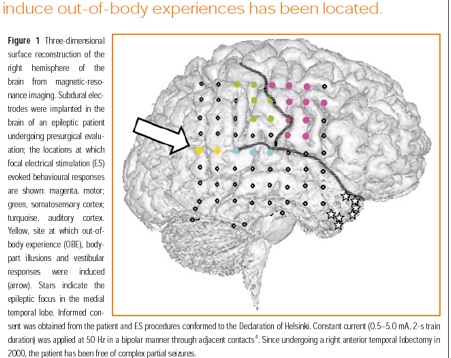
b) the chorus:
1- Old and new philosophers
Zeno, Parmenides,Heraclitus, Aristoteles,Plato
Z:“Contatti sono le totalità e le non totalità, il convergente e il divergente, il consonante e il dissonante: e fuori da tutte le cose ne sorge una sola, e fuori da una cosa sola sorgono tutte”:
a world of relations: “Contacts (relations) are totalities and non-totalities, convergent and divergent, consonant and dissonant: and out of all things comes one, and out of one all things come”
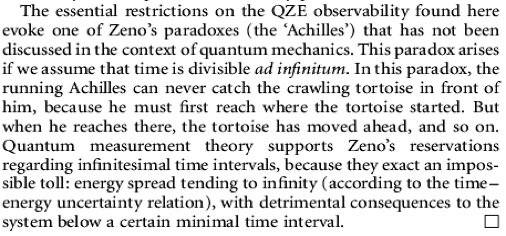
Achylles and the tortue
P: “motion is an illusion, there is no time”
H: “panta rei-everything’s changing”
“Negli stessi fiumi tanto entriamo quanto non entriamo, tanto siamo quanto non siamo”, “a coloro che entrano negli stessi fiumi continuano ad affluire acque sempre differenti” , “il mondo di fronte a noi-il medesimo per tutti i mondi-non lo fece nessuno degli dei né degli uomini, ma fu sempre, ed è, e sarà, fuoco sempre vivente, che divampa secondo misure e si spenge secondo misure”
“In the same rivers we enter and we do not enter, we are and we are not” “ to those who enter the same rivers always different waters come” “the world in front of us-the same for all worlds- was not made by any man or god, but always has been and is and will be, always living fire, which according to measures burns and according to measures dies out”
and let’s quote a comment on presocratic philosophy :
-...l’attimo come intuizione precede la scossa; nel fluire del tempo si erge improvvisamente un istante, che “non è in nessun tempo”, dice impropriamente Platone, ma che a rigore dà inizio al tempo, è già nel tempo, però allude a qualcosa che non è nel tempo, lo ripercuote, lo esprime.... “ogni cosa governa la folgore”. La dottrina dell’istantaneità è perciò un’indicazione ottimistica: l’attimo appartiene al tessuto della rappresentazione, allude al punto in cui questo viene lacerato...
E dietro Dioniso “il dio primordiale da cui tutti gli altri prendono inizio -secondo la teogonia rapsodica, il Tempo...Mnemosine ci insegna che l’origine di tutti i ricordi - là dove il tempo non è ancora cominciato- è quello appunto che si deve recuperare. Tale è l’insegnamento misterico, tutto il tempo che bisogna attraversare all’indietro per raggiungere il senza tempo, tutte le generazioni di dèi e di uomini, tutti i miti narrati da Orfeo, non sono altro se non giuochi di apparenze.” E nei primi principi di un’altra teogonia orfica leggiamo: “ si chiamava Tempo senza vecchiaia...e a lui era congiunta Ananke ( Necessità)...Tempo e necessità: una coppia decisiva di categorie: il nesso delle rappresentazioni sensibili - cioè il loro principio- può davvero pretendere di chiamarsi tempo, come il nesso delle rappresentazioni astratte può pretendere di chiamarsi necessità”. (Colli)
“..the istant as an intuition comes before the shock; in the flow of time an instant towers abruptly which “is in no time” as Plato unapproprietely says, but actually is the beginning of time, is already in time but hints to something which is not in time, expresses it and and echoes it.. “everything is ruled by the lightning”. The instantaneity doctrine is thereafter optimistic: the instant is a part of the tissue of representation, it hints to the point where that is torn...
And after Dyonisus “ the primeval god who gives origin to all the other ones”-according to rapsodic theogony- Time...Mnemosine teaches us that is the origin of all memories-there where time didn’t yet begin-that’s exactly what we have to recall. This is the mysteric teaching; all the time we have to cross backwards to reach the timeless, all the generations of of gods and men, all the myths that Orpheus narrates, they are nothing more than a play of appearance” And in the first principles of another orphic theogony we find: “it was called Time without aging..and Ananke (Necessity) was his kin...Time and Necessity: a fundamental pair of categories: the nexus of sensory symbolizations-indeed their beginning- may well be called time. as the nexus of abstract symbolizations may well be called Necessity”
Kant, ...later on,
Newton: absolute space and time (a fixed frame)
“I do not define time, space, place, and motion, as being well known to all. Only I must observe, that the common people conceive those quantities under no other notions but from the relation they bear to sensible objects. And thence arise certain prejudices, for the removing of which it will be convenient to distinguish them into absolute and relative, true and apparent, mathematical and common.
I. Absolute, true, and mathematical time, of itself, and from its own nature, flows equably without relation to anything external, and by another name is called duration: relative, apparent, and common time, is some sensible and external (whether accurate or unequable) measure of duration by the means of motion, which is commonly used instead of true time; such as an hour, a day, a month, a year.
II. Absolute space, in its own nature, without relation to anything external, remains always similar and immovable. Relative space is some movable dimension or measure of the absolute spaces; which our senses determine by its position to bodies; and which is commonly taken for immovable space; such is the dimension of a subterraneous, an aerial, or celestial space, determined by its position in respect of the earth. Absolute and relative space are the same in figure and magnitude; but they do not remain always numerically the same. For if the earth, for instance, moves, a space of our air, which relatively and in respect of the earth remains always the same, will at one time be one part of the absolute space into which the air passes; at another time it will be another part of the same, and so, absolutely understood, it will be continually changed.”
Bergson, Heidegger: later on
2- Literature
3- Phisicists old and new
4- sparse Mathematicians
the stage:
should be nature, reality, space, spacetime...but is there a stage?
_________________________________________________
3- At first we’ll deal with the topology of time, that is, we want to throw some blows at the common ideas about the structure of time: linearity, uniformity, continuity (all referred to the concept and assumptions of the real line)
this is regular time
this is different for the two
this is not regular for one
now it is bended (say, by a gravitational wave, but why not everyday?)
this is a worse situation (maybe a black hole passing nearby, but again still: why not everyday?)
this is quite weird: look how the system tunnels into another part
now let’s look into the evolution of a system: it’s a sequence of states: does it have a time, or is it just that, a sequence?
Literature, History will help us in this task:
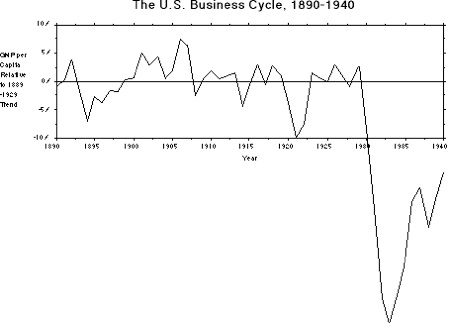

New Zealand
Braudel on India:
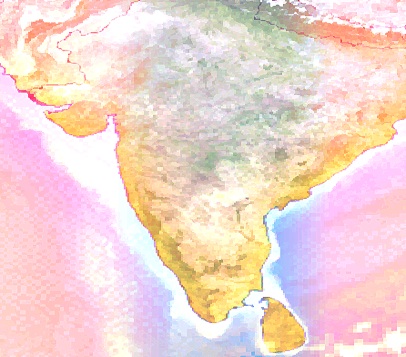
or Bloch:
“un intersecarsi di diversi piani del tempo, un contrappunto di squilibri temporali fra diversi popoli, classi, individui, tra diverse sfere culturali e sociali, e non la fila indiana del prima e del dopo”
A crossing of different time planes, a contrapunctus of time disequilibria among different populations, classes, individuals, among different culstural and social spheres, not the indian queue of before and after”
So we need to escape from the simplistic concept of progress and its underlying implied linearity.
“Berkeley negò che vi fosse un oggetto dietro le impressioni dei sensi; Hume, che vi fosse un soggetto dietro la percezione dei mutamenti. Il primo aveva negato la materia. Il secondo negò lo spirito...Negati materia e spirito, che sono continuità, non so con che diritto terremo per noi quell’altra continuità che è il tempo...Non basta un solo termine ripetuto per disordinare e confondere la storia del mondo, per affermare che questa storia non esiste? Negare il tempo è due negazioni: negare la successione dei termini di una serie, negare il sincronismo dei termini di due serie...and yet...negare la successione temporale, negare l’io, sono disperazioni apparenti e consolazioni segrete. Il nostro destino non è spaventoso perché irreale; è spaventoso perché è irreversibile. Il tempo è la sostanza di cui son fatto. Il tempo è un fiume che mi trascina, ma io sono il fiume...”(Borges)
“Berkeley denied there was any object undelying the impressions of senses; Hume that there was a subject behind perception of changes. The first had negated matter. The latter negated spirit...Once we negate matter and spirit, which are continuities, what gives us the right to keep for us that subsequent continuiy that’s time?..Doesn’t it suffice a single repeated term to shuffle and obscurate all of world’s history, to deny the very existence of this history? To negate time is a double negation: negate the sequence of the terms in a series, to negate the synchronism of the terms of two series...”
But again, what’s time?
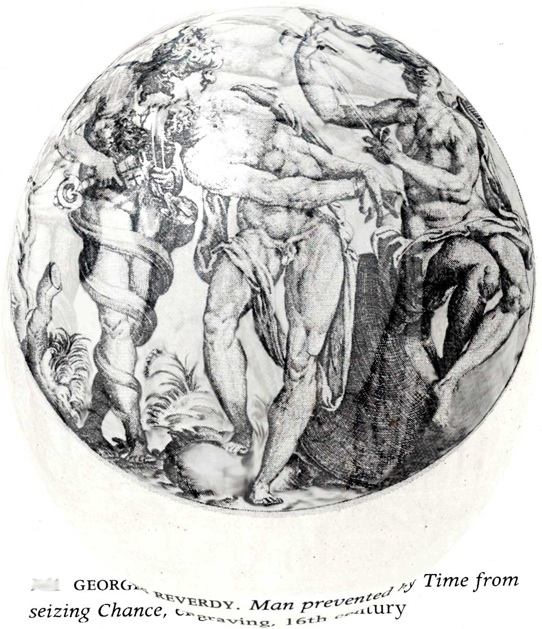
“The hardest thing of all is to find a black cat in a dark room, especially if there is no cat” Confucius
floppy economic theory
Fermat’s last theorem
Riemann’s conjecture
4- first definitions of time
a) operational definition: time is what is beeing measured by a clock (a circular definition, since any interval needs a reference)
clocks
We usually assume as clock a whole class of regular/cyclical events (the pendulum is the prototype), or simply regular ones (as the radioactive decay of an atom); on top of this there’s a class of parameters of a system that’s usually taken as indices of its evolution, such as entropy (or physiological ones such as cellular replication and death).
We can also make a distinction between internal clocks (like the ones which give way to circadian rythms) and external ones, as long as we remember that they have a strict albeit illdefined relationship;
we can make the following nonsimmetric statements: no internal clock is indipendent from its environment (weak), no external clock is independent from the observer (strong, and it deserves further investigation). Given this assumptions, a well defined clock is related to the observer’s perceptions, and it can be seen as the relation between two sequences, one internal (mediated by an integration of memory and consciousness) and one external.
In order for an event/sequence to be a real clock it has to satisfy three conditions:
a) that this relationships creates a complete ordering of events (before and after)
b) that it be dense everywhere (between any two points there’s another one)
c) that we may define on it a measure satisfying the 3 conditions :d(AB)=d(BA); d(AA)=0;d(AC)<d(AB)+d(BC).
But these conditions are not automatically satisfied by clocks: they depend on the set to be measured, so we are back to circularity.
b) other definitions are equally circular: time is that interval (of time...) in which things/movements happen - or tautological: time is the reference of movement
c) so we may begin to think that time is something we superpose to events; even if it looks hard to give a definition of movement without any reference to time (our idea of velocity has time at its very base: v=Ds/Dt ). [see the significance of Zeno’s paradoxes]. But we may speak of displacement, of a system that changes its state (changing one or more parameters), even of evolution (change as a function of these parameters)
d) the next step we usually make is to substitute to one of these internal parameters an external entity, typical of the observer (Augustine: extensio animae) or taken from external regular (cyclical) phenomena (like the sun changing its position) [but along this way you don’t escape circular tautologies]. The other way is a kind of mystical breath by which one inhales the temporal fluid of which everything is permeated.
e) for the physicist, in order to take a measure, he must assume an infinite coherence and repetibility of the event he takes as a measure of time. That’s an assumption based on the proper character of the event: for the pendulum there is no reason to suspect it could not be regular, and from this on, all events with a well known law and a fixed frequency will do. But this is no escape from the problem of what are we measuring. And, because of the problems that the lack of a proper notion of time gives, there have been attempts to formulate the physical laws without any reference to it (one of the first was Lorentz, and then we arrive to quantum gravity...)
f) let’s tackle a typical philosophical problem: what is now?(the moment you think of it it’s already gone): it goes back to the definition of a point on the real axis, but unfortunately we don’t give a definition of point, it’s assumed to be a ‘primitive concept’: but by and large the debates are quite similar. And we have no clear solution.And it’s connected to another famous problem that arises from the greek paradoxes: movement and changing:if I’m here I can’t be there, and when I’m there I’m no more here; and if I’ve changed it’s not the same person who’s in another place/time.......(so I don’t really move or change)
g) as we pointed before, one thing everybody knows is that he cannot change his past; so time at least has an arrow, but if there is a direction there must also be something going along that direction. So goes the common sense. But again this is the realm of conscious experience, and we have two possible ways: or to trust it to the limit of making it the basis of physical laws, or to try the other way round: to understand from the laws of nature why our consciousness gives us that kind of perception. (Penrose believes that in the forthcoming theory of quantum gravity we’ll find also the basis for consciousness)
So, let’s move on to quantum gravity and some more philosophy
lunedì 5 novembre 2012
